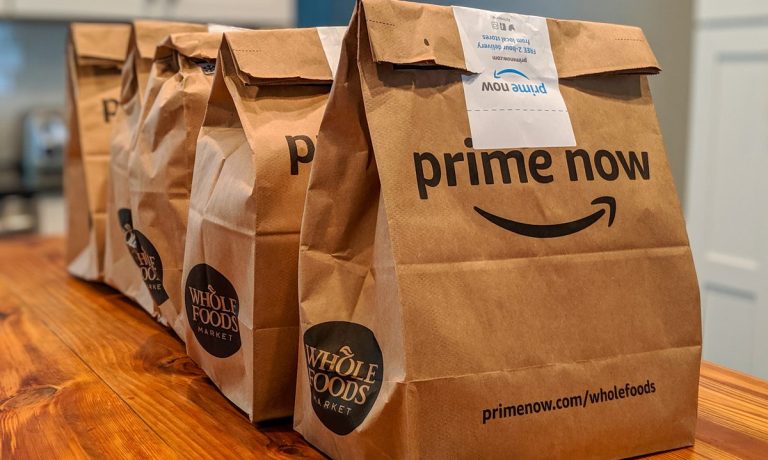
As small food brands look to reach consumers online, some are finding that, when it comes to both operational simplicity and to reaching the widest audiences, Amazon cannot be beat, despite the many frustrations of depending on the eCommerce giant.
In an interview with PYMNTS, Brett Cramer, owner of seasonings brand The Spice Lab, noted that, while the company’s direct-to-consumer (D2C) site generated “a couple hundred grand” last year, its Amazon business brought in $7 million.
“We don’t even sell on any other platform anymore,” Cramer said. “It’s just not worth it. It’s not worth the time or effort. The Walmart platform is so far behind what Amazon’s doing because Amazon has all the FBA [Fulfillment by Amazon] stuff.”
In an emailed response to this comment, a Walmart spokesperson pointed to the retailer’s offerings for sellers, Walmart Fulfillment Services.
“We know that fulfillment can be a challenge for any seller or retailer,” the spokesperson said. “We’re really proud of how we leverage Walmart’s world-class supply chain and expertise to benefits sellers of all sizes.”
Yet, while Cramer said he sees Amazon as a “super monopoly” in the eCommerce space for brands looking to build a following, he also noted that the company has major drawbacks for sellers. He cited a time when the company lost “a million and a half dollars” when its offerings were delisted from the platform, in error, two months before Christmas and remained down for somewhere between 45 and 60 days.
“It almost bankrupted the company,” Cramer said.
There is certainly a growing demand for eCommerce options for purchasing shelf-stable grocery products. Research from PYMNTS’ study “Changes in Grocery Shopping Habits and Perception,” which drew from a survey of more than 2,400 U.S. consumers, found that the majority of shoppers purchase packaged grocery items online more often than in stores, with one in three buying these items exclusively online.
According to PYMNTS data, Walmart’s share of the total food and beverage market is about seven times that of Amazon. Yet Amazon has been seeing strength in its center-aisle grocery categories, touting a selection 99 times larger than the average supermarket.
Plus, Amazon’s reach with consumers is difficult to beat. A PYMNTS survey of nearly 2,700 U.S. consumers conducted in April revealed that 61% of U.S. consumers are Amazon Prime members, and 26% are subscribed to Walmart+.
Notably, one Amazon service that The Spice Lab has not been able to take advantage of — not for want of trying — is its Subscribe & Save program, offering consumers a discount when they order a product on a recurring basis.
Cramer noted the company found that the program “doesn’t work” for the spices category “at all,” adding that a jar of spices can last for two years, while Subscribe & Save works better for items such as coffee, energy drinks or beauty products that consumers use every day.
For those kinds of companies, the program can certainly be effective, as is seen in its widespread adoption among consumers. According to research from “The Subscription Commerce Conversion Index: Subscribers Seek Affordability and Convenience,” a PYMNTS and sticky.io collaboration, 42% of consumers with product subscriptions participate in Subscribe & Save.
“Subscribe & Save doesn’t work with a lot of items because people don’t consume them on a day-to-day basis,” Cramer said. “It has to be a product that people consume in less than 30 days.”